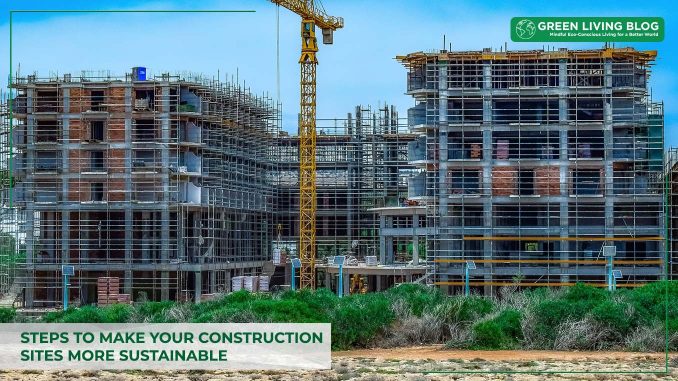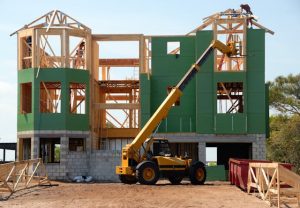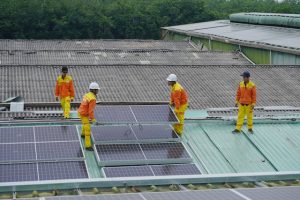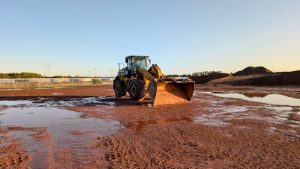
Sustainability is now a key focus for many industries, and construction is no exception.
With construction projects significantly impacting the environment, from material usage to waste production, there’s a growing responsibility for companies to make their sites greener.
Taking steps toward sustainable construction not only helps the planet but can also lead to cost savings, better community relationships, and compliance with modern environmental standards.
Here’s a guide on how to make your construction sites more sustainable.
1) Use Eco-Friendly Building Materials

One of the most effective ways to improve sustainability is to use environmentally friendly materials. Traditional construction materials like concrete and steel have a large carbon footprint, but alternatives are now available that can reduce environmental impact improve the project’s image and appeal to clients and stakeholders.
Some sustainable options include:
- Recycled materials (like recycled steel, reclaimed wood, and even recycled concrete)
- Bamboo
- Low-emission concrete
2) Implement Sustainable Supply Chain Management
A sustainable supply chain is important for creating a greener construction site. By sourcing responsibly, you ensure that the materials and products used come from environmentally and ethically responsible sources, reducing the overall environmental impact of your projects.
Key strategies for sustainable supply chain management include:
- Work with suppliers certified for sustainability, such as FSC-certified wood suppliers or ISO 14001-certified vendors, to ensure the materials used have minimal environmental impact.
- Sourcing locally reduces the carbon footprint associated with transporting materials and equipment over long distances.
- Work only with suppliers who are transparent about their environmental practices, sourcing methods, and manufacturing processes.
- By working together, you can innovate and improve sustainable practices across the entire supply chain, benefiting both parties and promoting greener standards within the industry.
3) Minimise Waste on Site
Construction sites can generate a large amount of waste, much of which ends up in landfills. To create a cleaner and more sustainable site, it’s essential to have a strategy for waste minimisation.
Some tips include:
- Planning for precise material quantities to avoid leftover waste
- Reusing and recycling materials like metals, wood, and plastics
- Avoiding single-use plastics by using reusable containers, bags, and packaging where possible
4) Improve Energy Efficiency

Energy usage on construction sites is often high, especially with heavy machinery and equipment in use. Finding ways to reduce energy consumption can significantly improve the sustainability of your projects.
Consider these energy-saving practices:
- Opt for newer, fuel-efficient equipment or machinery powered by renewable energy sources, like electric diggers or solar-powered lighting.
- Installing temporary solar panels on-site can power lighting and smaller equipment, reducing reliance on fossil fuels.
- Machinery and vehicles often idle unnecessarily on site. Encouraging workers to switch off engines when not in use can cut energy usage and reduce emissions.
By investing in energy-efficient practices, you’re not only reducing the site’s carbon footprint but also potentially lowering fuel and electricity costs.
5) Reduce Water Consumption
Water is essential on construction sites, but it’s also a valuable resource that shouldn’t be wasted. Sustainable water management can help preserve local water supplies and reduce operational costs.
Some ways to minimise water usage include:
- Collect and reuse water to be used in dust suppression or equipment cleaning
- Use water-efficient equipment
- Monitor water usage and reduce any waste where necessary
6) Focus on Eco-Friendly Site Operations
Improving site operations with sustainability in mind goes a long way toward reducing your environmental impact and improving your company’s reputation as clients tend to value contractors who prioritise sustainable practices. Green practices can be applied to various aspects of day-to-day operations to make construction more sustainable.
Here’s how:
- Reduce transportation needs where possible to reduce carbon emissions
- Implement sustainable site offices with energy-efficient lighting, heating, and cooling
- Promote a green culture by encouraging recycling, reducing waste, and energy conservation
7) Invest in Sustainable Landscaping

When planning the construction of outdoor spaces, consider sustainable landscaping techniques to reduce environmental impact. Landscaping choices, such as planting native species, can minimise the need for chemical fertilisers and excessive water. They also help support the local ecosystem, strengthen the site’s appeal, and reduce maintenance costs over time.
Consider these tips for sustainable landscaping:
- Use native plants as these adapt to local conditions, requiring less water, fertiliser, and maintenance
- Implement erosion control measures by planting grass or ground covers on slopes and retaining walls
- Incorporate green spaces such as grassed areas and planting beds to help absorb rainwater, reducing runoff and providing a more natural look to the site
Start Making Your Construction Site Greener Today
Making your construction sites more sustainable requires thoughtful planning and a commitment to environmentally friendly practices. By using eco-friendly materials, minimising waste, improving energy efficiency, conserving water, enhancing site operations, and embracing sustainable landscaping, you’re actively contributing to a greener industry.
These efforts not only reduce your environmental impact but also help your business align with the growing demand for sustainable construction, potentially attracting more clients and projects that value responsible practices.
![]()
Author Profile

- Eco Warrior by day, Eco Blogger by night trying to get the eco balance right.
Latest entries
 Green Home GuidesApril 17, 2025How Heat Pumps Help Cut Household Carbon Emissions
Green Home GuidesApril 17, 2025How Heat Pumps Help Cut Household Carbon Emissions EnvironmentApril 17, 20256 Benefits of Wall Cladding for Eco-Friendly Renovations
EnvironmentApril 17, 20256 Benefits of Wall Cladding for Eco-Friendly Renovations EnvironmentMarch 31, 20255 Sustainable Materials for Building Your Dream Eco-Friendly Pergola
EnvironmentMarch 31, 20255 Sustainable Materials for Building Your Dream Eco-Friendly Pergola Best practicesMarch 25, 202510 Green Tips to Live a More Sustainable Lifestyle
Best practicesMarch 25, 202510 Green Tips to Live a More Sustainable Lifestyle





Leave a Reply
You must be logged in to post a comment.